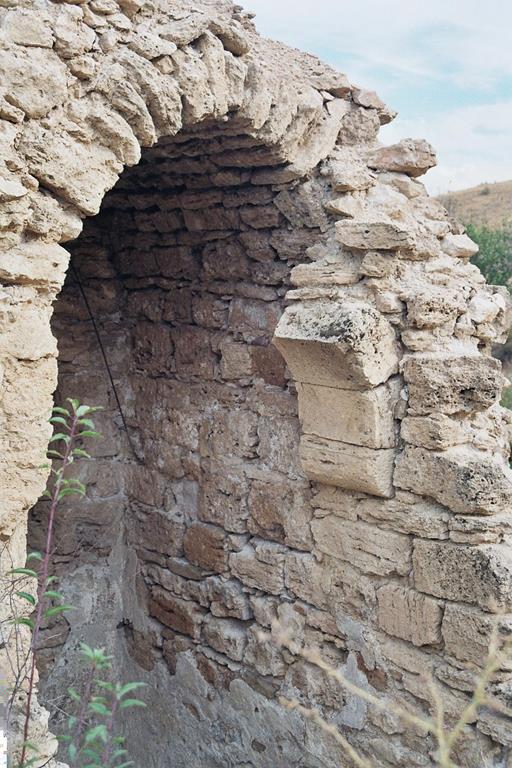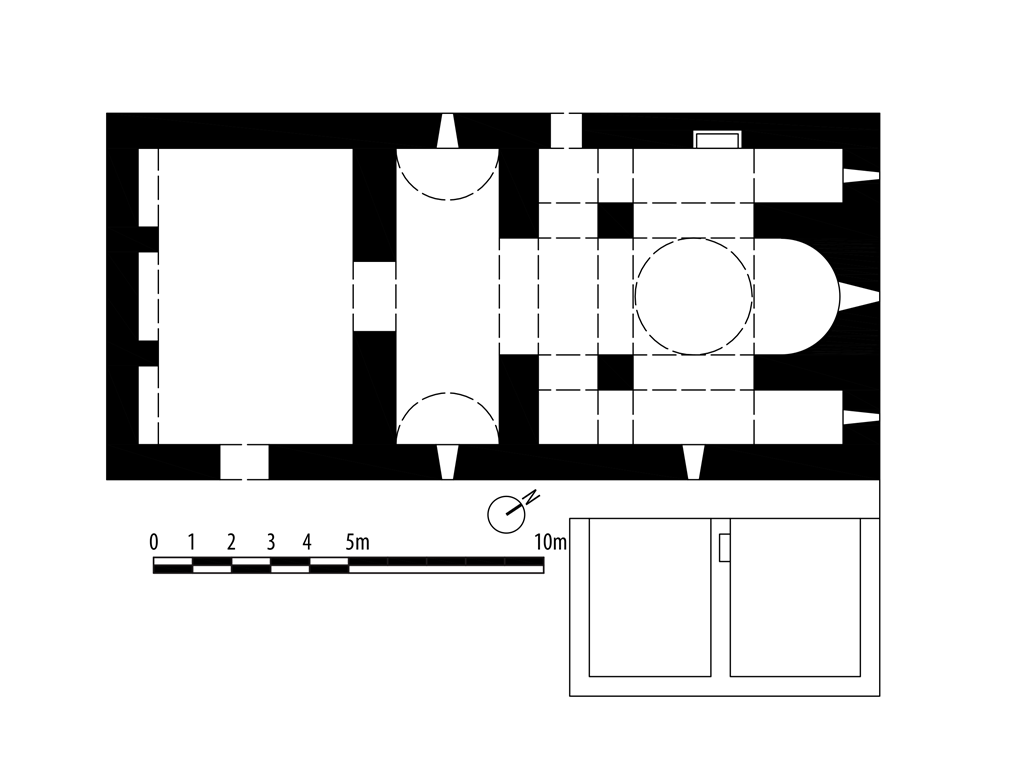Also known as the Hav(k‘) or Havav [Ekinözü] monastery, owing to its proximity to the village of the same name, the monastery of the Holy Mother of God “of the Delightful View” takes its name from its site on the north side of the eastern Euphrates Valley, or Aradzani [Murat Suyu]. From this location, at 8° 48’ N and 39° 52’ E, it dominates an entire portion of the plain of Palu [Palu].
It is no doubt because of the outer structure of the church’s apse that the monastery has been regarded as very old. The List of Armenian national properties (established between 1913 and 1915 by the Armenian patriarchate of Constantinople) situates its foundation in 1223, while its scriptorium is mentioned in manuscripts as early as 1468 and until the middle of the 18th century (colophons dated 1518, 1576, 1642, 1645, 1661, 1698 and 1739). Two archbishops figure among its abbots in the first half of the 17th century: Simeon, mentioned in 1623, and George (Kevork), mentioned in 1645 as the author of major renovations that probably concerned the locality of Havav as well. Renovations were also undertaken in the 18th century and then more recently, at the instigation of Father Eznig Kalpakjian, diocesan primate from 1898 to 1903. The primates of the diocese of Palu (Palahovid) were usually but not systematically the superiors of the Holy Mother of God monastery, which was the seat of the prelacy with jurisdiction over 41 localities and 40 churches. At the beginning of the 20th century, this diocese had for a time included the neighboring dioceses of Shenkush or Chënkush [Çüngüş] and Arghën [Ergani] (comprising 12 localities and 14 churches: see n° 79 et 67). The list of the monastery’s abbots and the primates of the Palahovid diocese has largely been reconstructed for the years 1437–1915. The last occupant of the seat was Father Eznig Kalpakjian (second term) who was simultaneously abbot of the monastery of the Holy Mother of God “of the Delightful View” (Sirahayiats Surp Asdwadzadzin) of Chënkush. He was martyred in 1915.

Interior, south-east angle, 2011 (OTC).
The Delightful View includes the church of the Holy Mother of God, a cross-in-square configuration with a dome, restored between 1635-1645 by archbishop George and again in the 18th century together with the rest of the monastery; a double narthex forming, with the church, a bloc of some 19.5 x 9m; outbuildings constructed against a big courtyard wall including more than twenty dwellings and cells; and, to the south of the church, the small cemetery for the monks. At one time the monastery had also temporarily housed an orphanage and a school. An ancient icon was conserved inside the church, whose two big doors were reinforced with iron bars. In addition to a collection of 328 pieces of copperware, and furniture, the monastery also possessed archives and manuscripts. Its vast domain, estimated at some 2000 hectares – it took over three hours to walk the perimeter – featured stands of oak and popular, fields and grasslands and, not far from the north wall, a pond and a watermill.

Plan (after J.M.Thierry).
In the town of Havav, a so-called cathedral church (Gat’oghigue), which like the monastery was the seat of the arch-diocese, probably came under the jurisdiction of the latter. The monumental fountains nearby, no doubt constructed between 1635 and 1645 but restored in 1764 by a new abbot Georges (Kevork) and one of them again in 1904, certainly belonged to the monastery as well.
Confiscated after 1915, the monastery domain was taken over while the buildings were plundered and abandonned. The courtyard wall is still standing, but the outbuildings have disappeared. Of the church, which was deliberately destroyed, only ruins remain, in particular those of the apse; the cemetery has been ransacked. The cathedral church in the village of Havav, a single-nave church with three apses measuring some 12.5 × 9.4 m, of which the saddle-backed roof was still visible in the 1970s, is no longer covered today and lies in ruins. However, the initiative of the lawyer and journalist, Fethiye Çetin, whose grandmother was Armenian and native to the village, led to the complete restoration of the two nearby fountains in 2012, under the auspices of the department of Historical Monuments and with the support of the Hrant Dink Foundation.
Oskian, 1962, 214-221. Thierry, 1998-2000, 329-358. K. Kévonian, 2014, 413-428. Khatchadourian et al., 2016, 102-103.